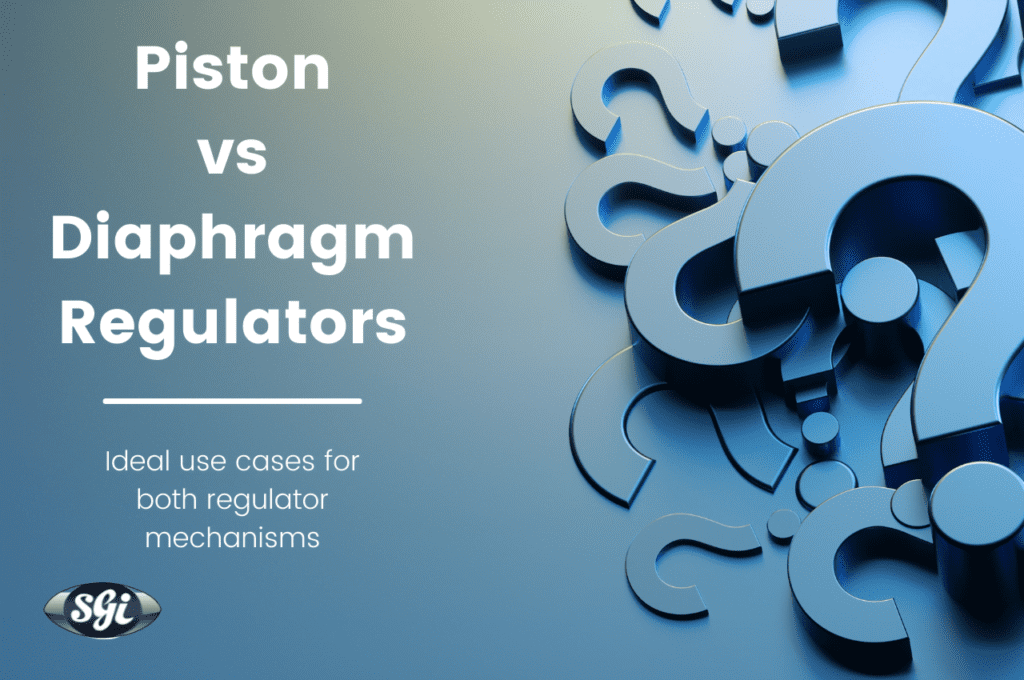
Calibration gas regulation systems use a variety of regulators as per the gases and the systems to be worked with. These regulators have a variety of mechanisms required as per the use case in order to help regulate gas pressure. Two of the most widely used mechanisms in the industry are piston and diaphragm-based regulators. Both the mechanisms have their own advantages and use. A thorough understanding is essential to avoid mishaps and ease the calibration process.
A piston-based regulator, as the name suggests, uses a piston and spring-based mechanism to regulate the gas pressure. The operator that connects the gas detector to the regulator for calibration lets the high-pressure gas into the regulator's second stage chambers thereby reducing the pressure in the first stage's intermediate chambers. This moves the piston head and spring, raising the valve and allowing the gas to pass from the high-pressure chamber to the intermediate pressure chamber all the way to the second stage through a connecting hose. SGI's fixed flow regulator uses a piston-based mechanism to regulate gas pressure.
A diaphragm-based regulator helps control the gas pressure with the help of a membrane that is sensitive to the pressure within the chambers. As the regulator is connected with the gas detector, the regulator's first stage intermediate chamber's pressure is reduced thereby pushing inward on the diaphragm which allows a controlled flow of the high-pressure gas into the tank via a connecting hose. SGI's demand flow regulator uses a diaphragm-based mechanism to regulate gas pressure.
Both the regulators have their own uses and are preferred basis the individual requirements of the users. Although each has its own set of advantages and disadvantages. A diaphragm-based regulator, due to its mechanism is sensitive to pressure and works well with lower pressure applications as against piston-based which allows control of higher pressures in gases. A diaphragm-based regulator is a simpler mechanism and provides much more accuracy in controlling outlet pressure than a piston-based regulator. On the other hand, a piston-based regulator is tougher and has a higher resistance to damage as diaphragms are more susceptible to rupture. Piston-based regulators are also safer in over-pressurized application scenarios than diaphragm-based regulators. As one can see, each regulator has its own feature sets and advantages. While diaphragm-based regulators ensure accuracy, piston-based regulators are a preferred choice for higher pressure applications. It's necessary that you understand your requirements thoroughly before you choose to reduce damages or accidents and improve performance.